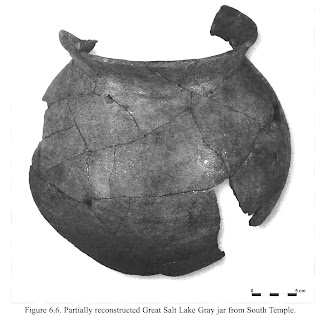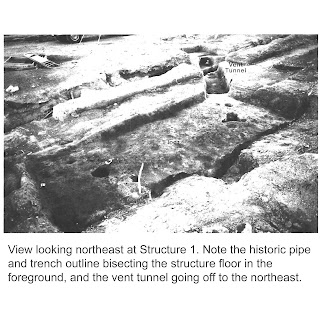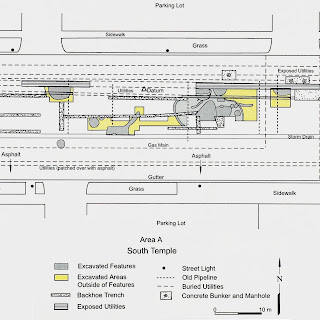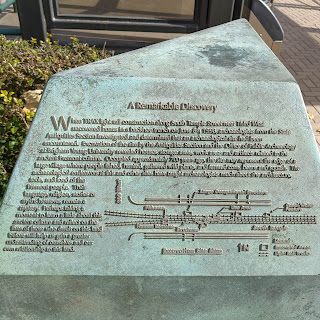The village was situated near City Creek, a good source of water for household and agricultural purposes ( the same reason the Mormon Pioneers also liked the area).
A total of 7 house structures and 2 ramada work areas were uncovered in just this small area under South Temple, indicating a much larger village was likely present. The people of City Creek Village relied heavily on farming- remnants of maize and beans were found but they also likely planted squash and melons.
Their reliance on agriculture is also shown in the type of grinding stones they used – deeply shaped metates and two-handed manos that could grind lots of maize. Stable carbon isotope analysis also shows a diet heavily reliant on maize and less reliant on wild foods, especially when compared to other Fremont groups who lived along the Great Salt Lake wetlands near Ogden and Brigham City.
However, the City Creek folks still incorporated wild foods in their diet including Bighorn sheep, deer, bison, pronghorn, elk, sage grouse, jackrabbit, trout, chub, ducks, geese, cattail, ricegrass, and goosefoot.
The village was also involved with trade networks. A shell bead made of Olivella, native to the Pacific coast, was found as well as a ceramic fragment of Tsegi Orange Ware from the Ancestral Puebloan area to the south.
Other artifacts indicate that they were normal people doing everyday things like cooking, cleaning the house, taking out the trash, mending and making clothing, fixing hunting gear, playing music, using medicines to help the sick, and taking care of the elderly.
The remains of the induvial found by the TRAX construction crew was that of a man in his 50s. At his death, he had extensive loss of bone density, advanced spinal arthritis, and cervical vertebrae degeneration (C4-C5 had completely fused; C5-C7 were compressed). He had also lost most of his teeth and had abscesses in his jaw. Very painful. After death, he was carefully buried in a prepared grave, probably lined with grasses.
Source:
BYU Museum of Peoples and Cultures Technical Series No 03-07. The Right Place- Fremont and Early Pioneer Archaeology in Salt Lake City. By Richard K. Talbot, Shane A Baker, and Lane D. Richens. 2004.
Images 1-8 are from the cited BYU monograph.
 |
| Partially reconstructed Great Salt Lake Gray ceramic jar. |
 |
| A bone whistle. |
 |
| Selected two-handed manos. |
 |
| Archaeological excavation of Structure 1. |
 |
| Archaeological excavation of Structure 5, note melted adobe in middle. |
 |
| Plan view of Structure 2. |
 |
| Archaeological plan view excavated area of Area A on South Temple. |
 |
| Interpretive plaque located at the Arena TRAX station showing excavated area, 2021. |

No comments:
Post a Comment